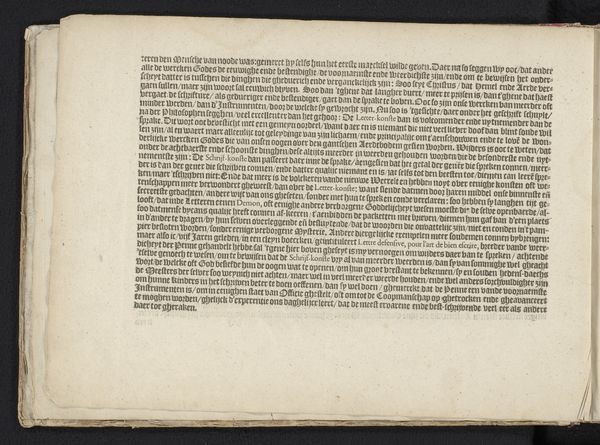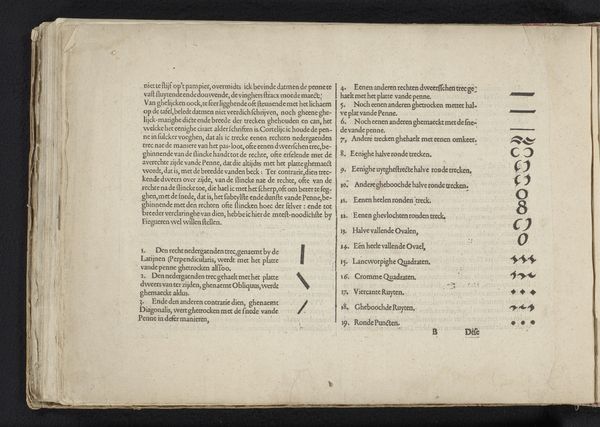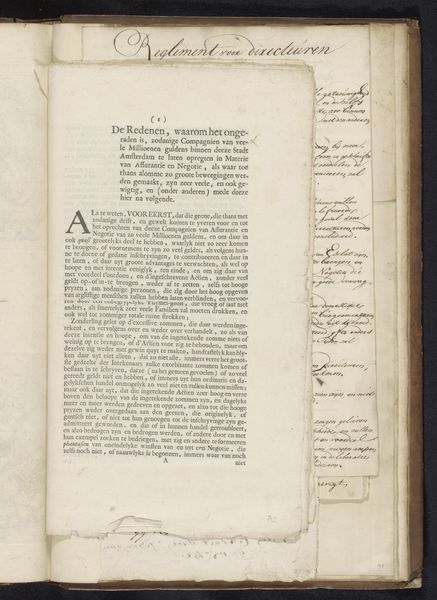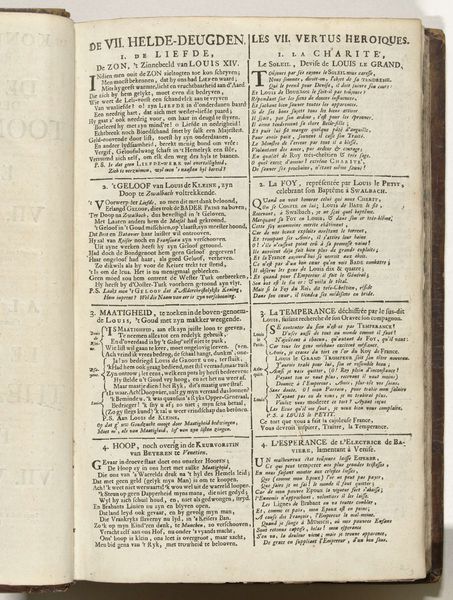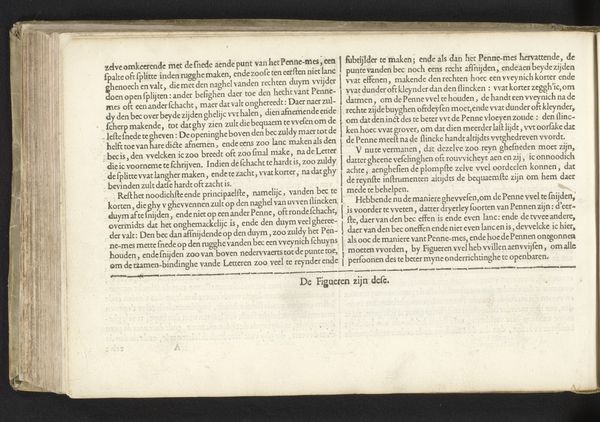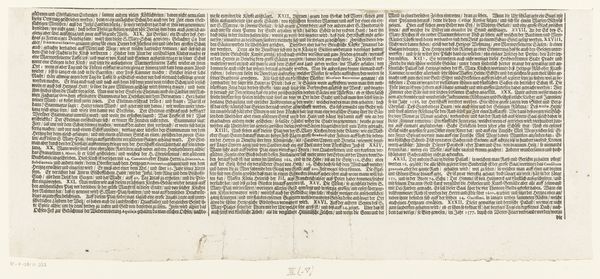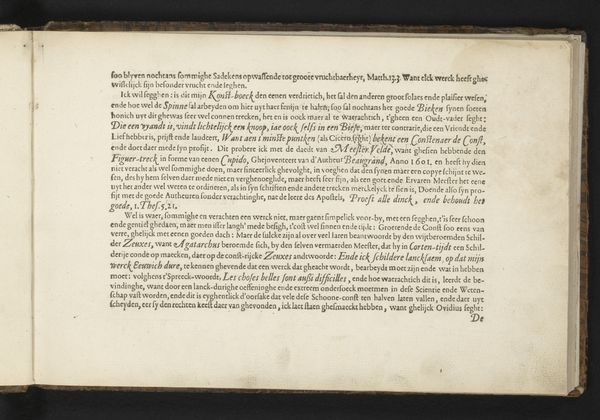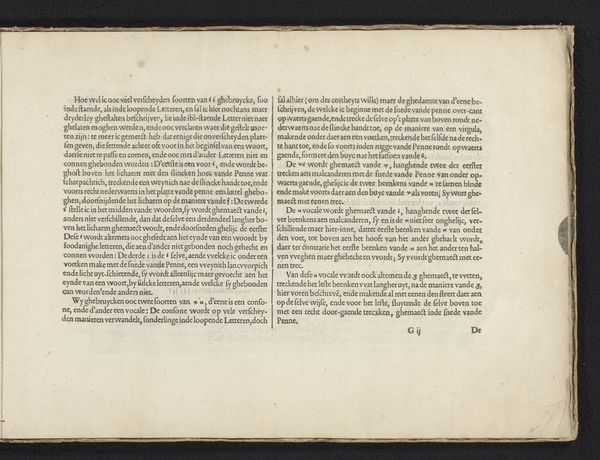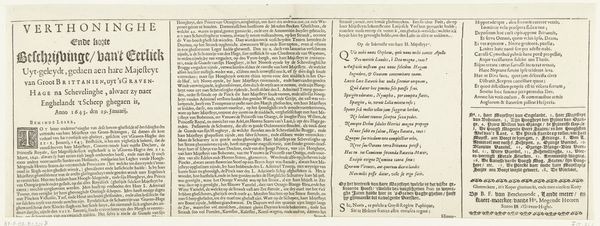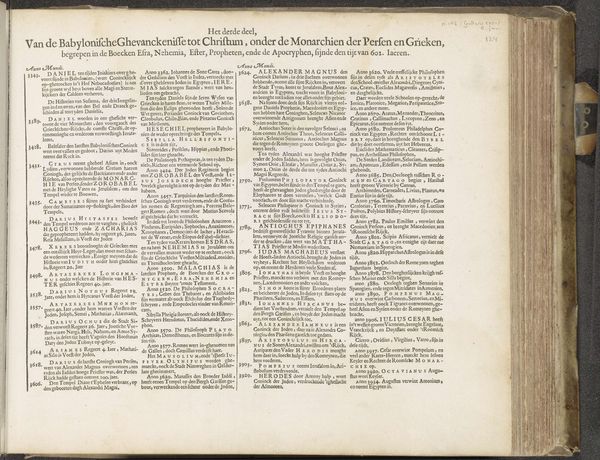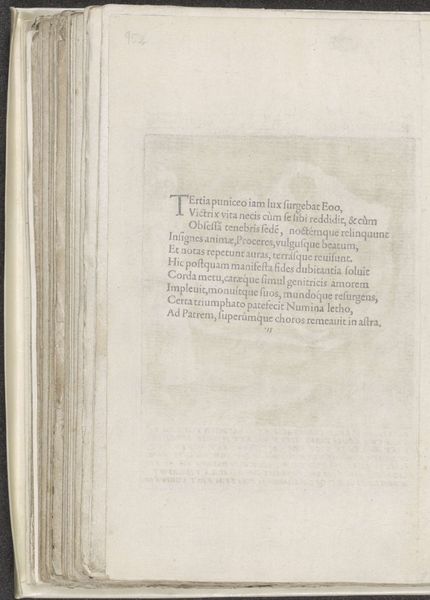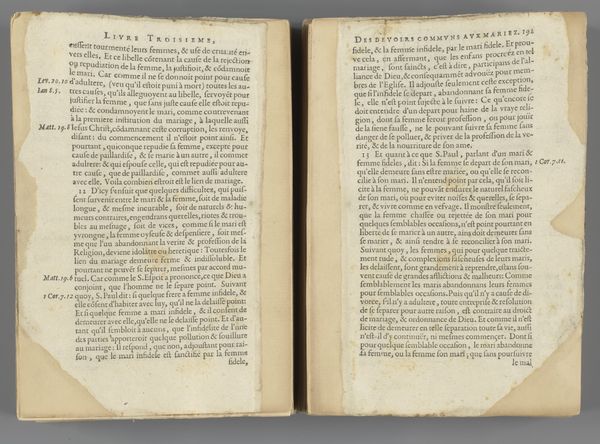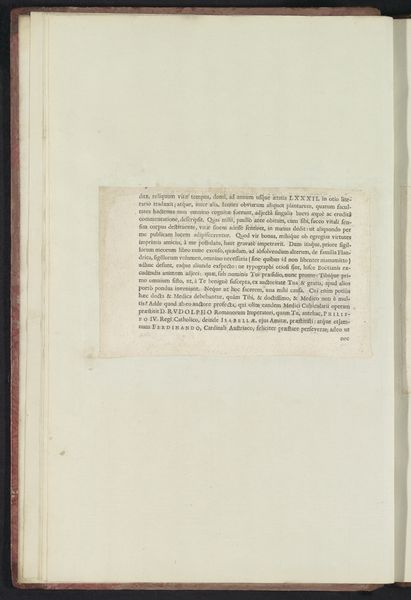
Register voor de prenten 25-50 en A-C in de serie: Bombario Actionist en de Geest van Esopus, 1720 1718 - 1720
0:00
0:00
anonymous
Rijksmuseum
print, etching, paper
#
narrative-art
#
dutch-golden-age
# print
#
etching
#
paper
#
history-painting
#
miniature
Dimensions: height 168 mm, width 109 mm, height 227 mm, width 170 mm
Copyright: Rijks Museum: Open Domain
Curator: This is a register from the series "Bombario Actionist en de Geest van Esopus, 1720," made between 1718 and 1720 by an anonymous artist. It's a miniature etching on paper, currently held at the Rijksmuseum. What strikes you first? Editor: The sheer density of text! It's visually overwhelming; a grid, really. I am immediately aware of the texture of the paper, of the incised marks filled with ink. It gives the object a tactile weight, doesn’t it, as if the material itself bears the story? Curator: Indeed. The etching process itself—the physical act of incising lines to hold ink—is central to its meaning. These meticulous engravings provided a relatively reproducible means for disseminating satire and political commentary, if one looks at the rest of the Bombario series. Note the stylistic approach related to the Dutch Golden Age. Editor: Precisely. The material speaks to accessibility, but I wonder about the intended audience. Miniature etchings like this—so intricately made—suggest both the wider reach of printmaking and its reliance on skilled artisanry and possibly expensive distribution networks. How did the social realities shape this register? Was this satire accessible or subversive for a limited number? Curator: The formal elements tell a story. The arrangement of the text—columns and numbering—mimics the structured thinking and encyclopedic ambitions of the Enlightenment. Editor: I'd focus, then, on the labour. The artist's process reflects—quite literally—the intense labor invested. This piece becomes a testament to production in and of itself, don't you think? And, while miniature, one shouldn't underestimate its political potential. Curator: So, it seems this "register" points not just to text, but to wider currents of 18th-century socio-political thought. Editor: Ultimately, the way this object invites questions about its creation deepens the historical content to a richer experience for the viewer.
Comments
No comments
Be the first to comment and join the conversation on the ultimate creative platform.
